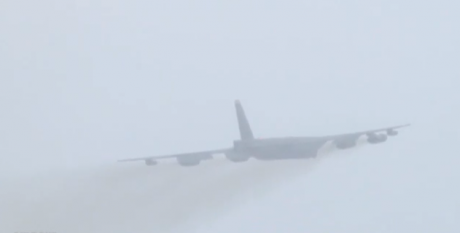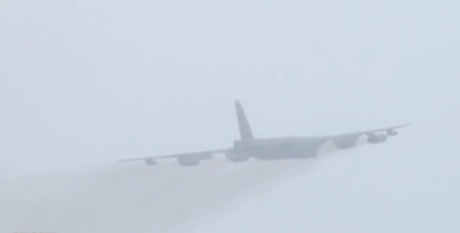We have already seen several MITO (Minimum Interval Take Off) procedures of the B-52 Stratofortress bombers from Minot Air Force Base, North Dakota, or Barksdale AFB, Louisiana.
Here’s another one, showing a mass launch of B-52 departing in the thick fog for a training mission.
Bombers, air defense fighters and other key assets must be prepared to operate in marginal weather conditions, hence daily flying activities can’t stop in case of bad weather, that makes training even more realistic.















